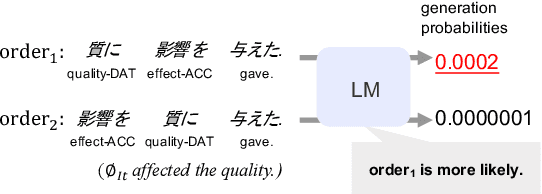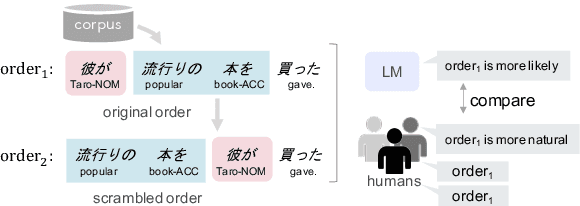Language Models as an Alternative Evaluator of Word Order Hypotheses: A Case Study in Japanese
Paper and Code
May 02, 2020



We examine a methodology using neural language models (LMs) for analyzing the word order of language. This LM-based method has the potential to overcome the difficulties existing methods face, such as the propagation of preprocessor errors in count-based methods. In this study, we explore whether the LM-based method is valid for analyzing the word order. As a case study, this study focuses on Japanese due to its complex and flexible word order. To validate the LM-based method, we test (i) parallels between LMs and human word order preference, and (ii) consistency of the results obtained using the LM-based method with previous linguistic studies. Through our experiments, we tentatively conclude that LMs display sufficient word order knowledge for usage as an analysis tool. Finally, using the LM-based method, we demonstrate the relationship between the canonical word order and topicalization, which had yet to be analyzed by large-scale experiments.
 Add to Chrome
Add to Chrome Add to Firefox
Add to Firefox Add to Edge
Add to Edge